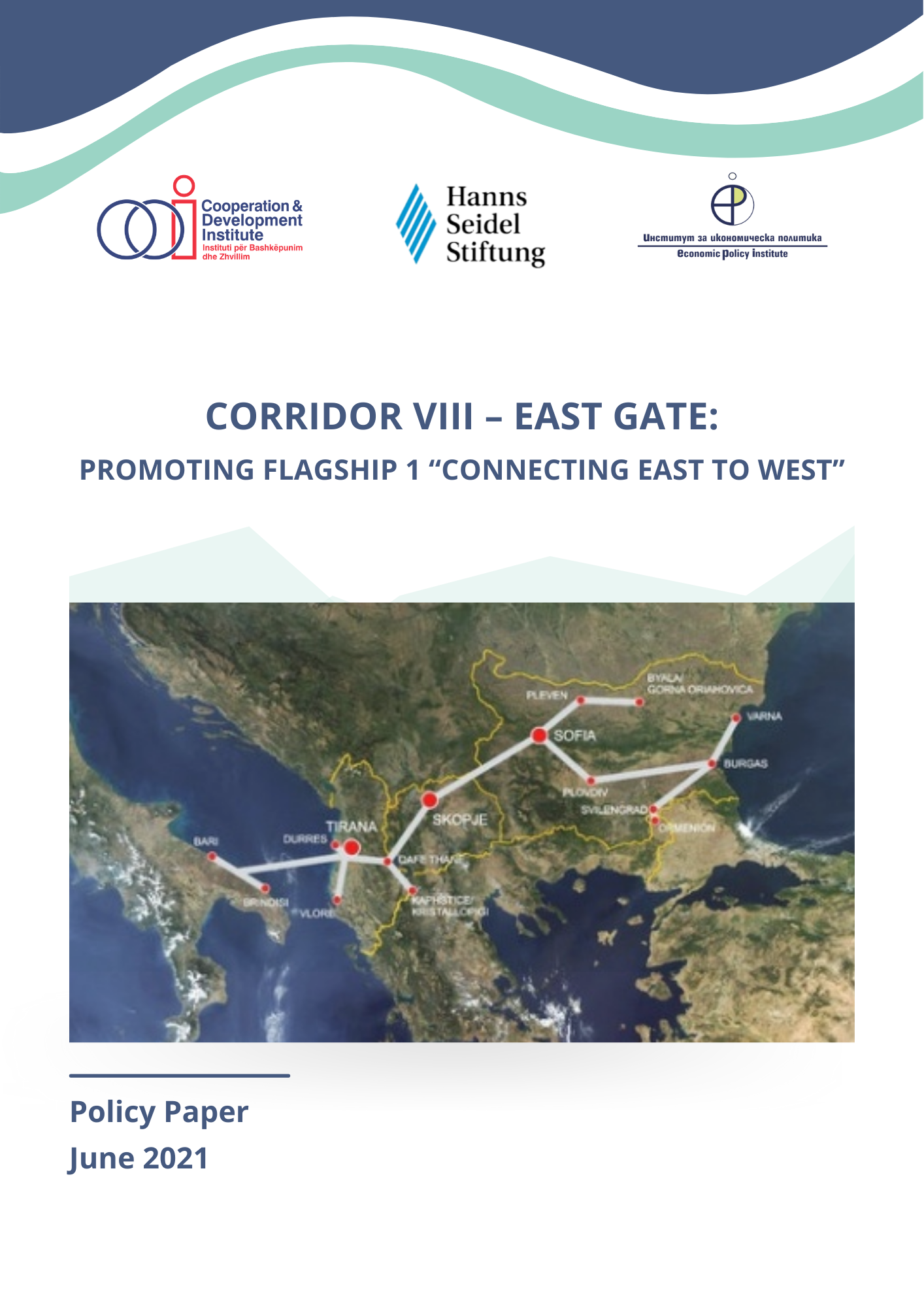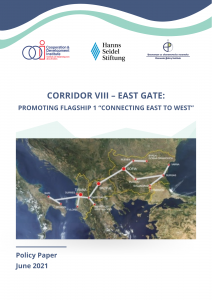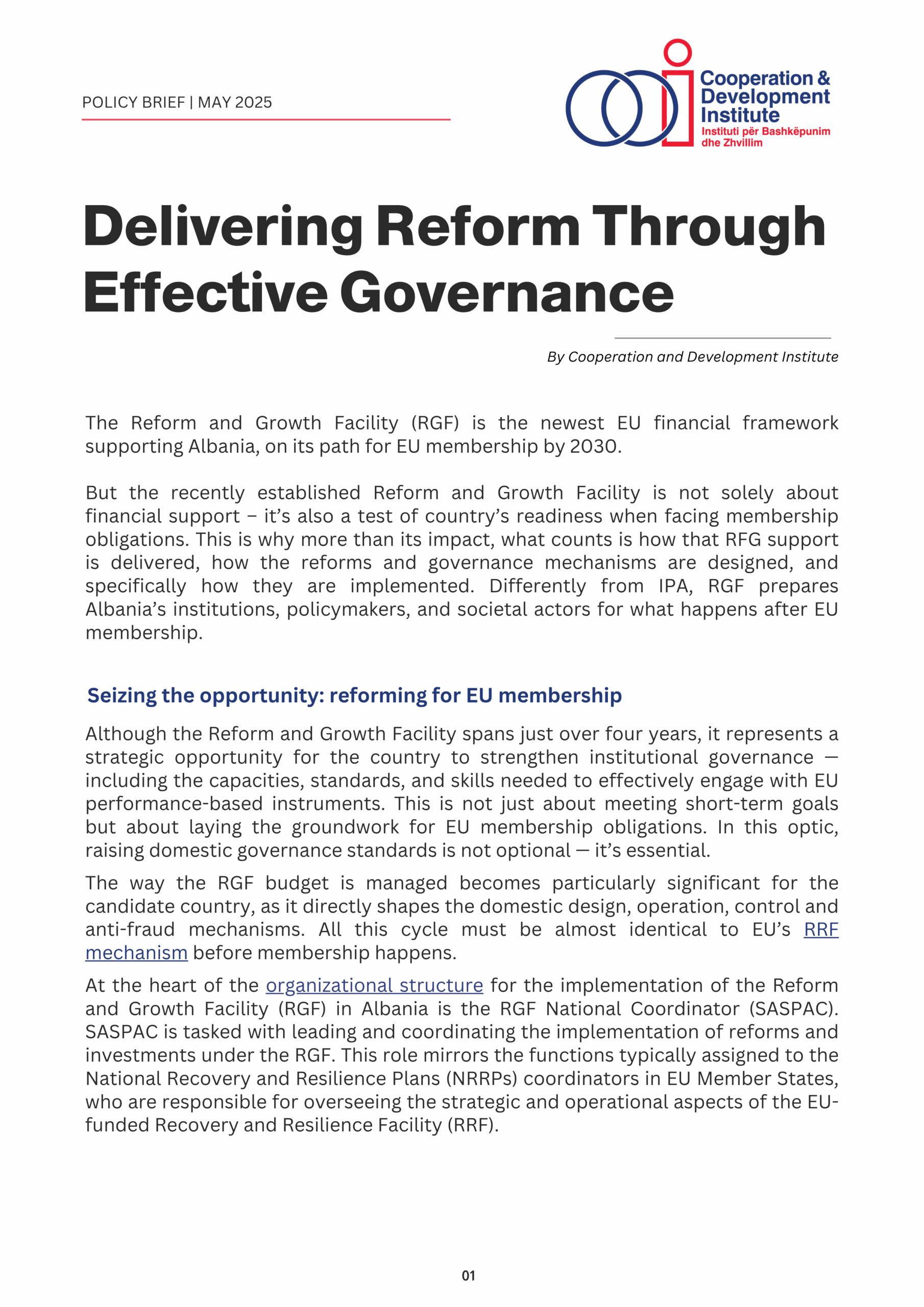Corridor VIII – East Gate : Promoting Flagship 1 “Connecting East to West”

Hybrid Event on Economic and Investment Plan Flagship Projects and the Role of the Civil Society
June 14, 2021
1st Ideas go public Lab: Moving forward or standing still? New momentum for the European future of Bosnia and Herzegovina
June 30, 2021Is connectivity between the Black Sea and the Adriatic coast viable? Is there an economic rationale for enhanced connectedness stretching from Varna and Burgas in Bulgaria over Plovdiv-Sofia-Skopje-Tirana to Durrës in Albania and Bari in Italy?
At first glance, economic rationale is discussable since economic exchange between Albania, Bulgaria and the Republic of North Macedonia remains relatively modest. However, enhancing connectivity can foster economic relations not only between these countries but also serve as a boost for intensifying economic relations that go beyond the boundaries of the three states and eventually can bring benefits to stakeholders in Italy, Kosovo, Montenegro, Romania and Turkey.
There is an economic rationale behind the possible benefits for each and every one of them. For instance, Italy has been among the three biggest trade partners of Bulgaria for years – in 2019 alone, in the year before the pandemic, bilateral trade reached EUR 4.7bn. Therefore, one can assume that the availability of easier and faster connections will further positively impact bilateral trade. Improved connectivity will offer an easier access to companies from Romania to the Western Balkan countries as well.
To demonstrate that potential, it comes as no surprise that in 2019 Romania was the second biggest trade partner of Bulgaria with a total trade volume of EUR 5bn after Germany (EUR 8.5bn). Besides, Corridor VIII might provide Turkey, as a major regional economic powerhouse, whose trade volumes only with Bulgaria reached EUR 4.4bn in 2019, with an alternative route. Last but not least, Corridor VIII will increase directly or indirectly regional connectedness of Montenegro and Kosovo.
This Policy Paper was prepared in the framework of the online event “Corridor 8 – East Gate: Promoting Flagship 1 “Connecting East to West” organized by Cooperation Development Institute in partnership with Economic Policy Institute in Sofia and supported by Hanns Seidel Stiftung.





National Parliament and the Reform Agenda 2024-2027
Read more